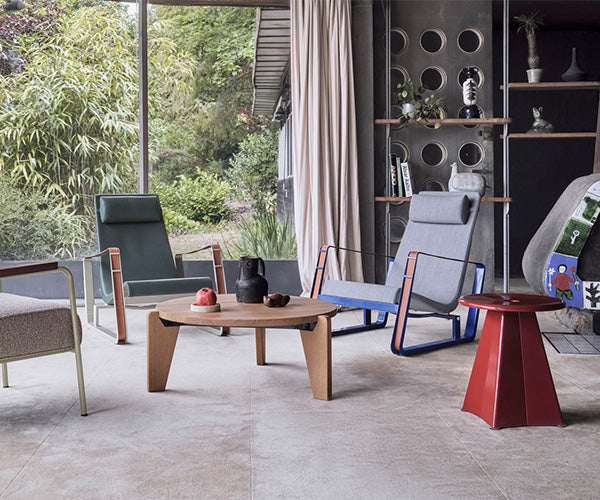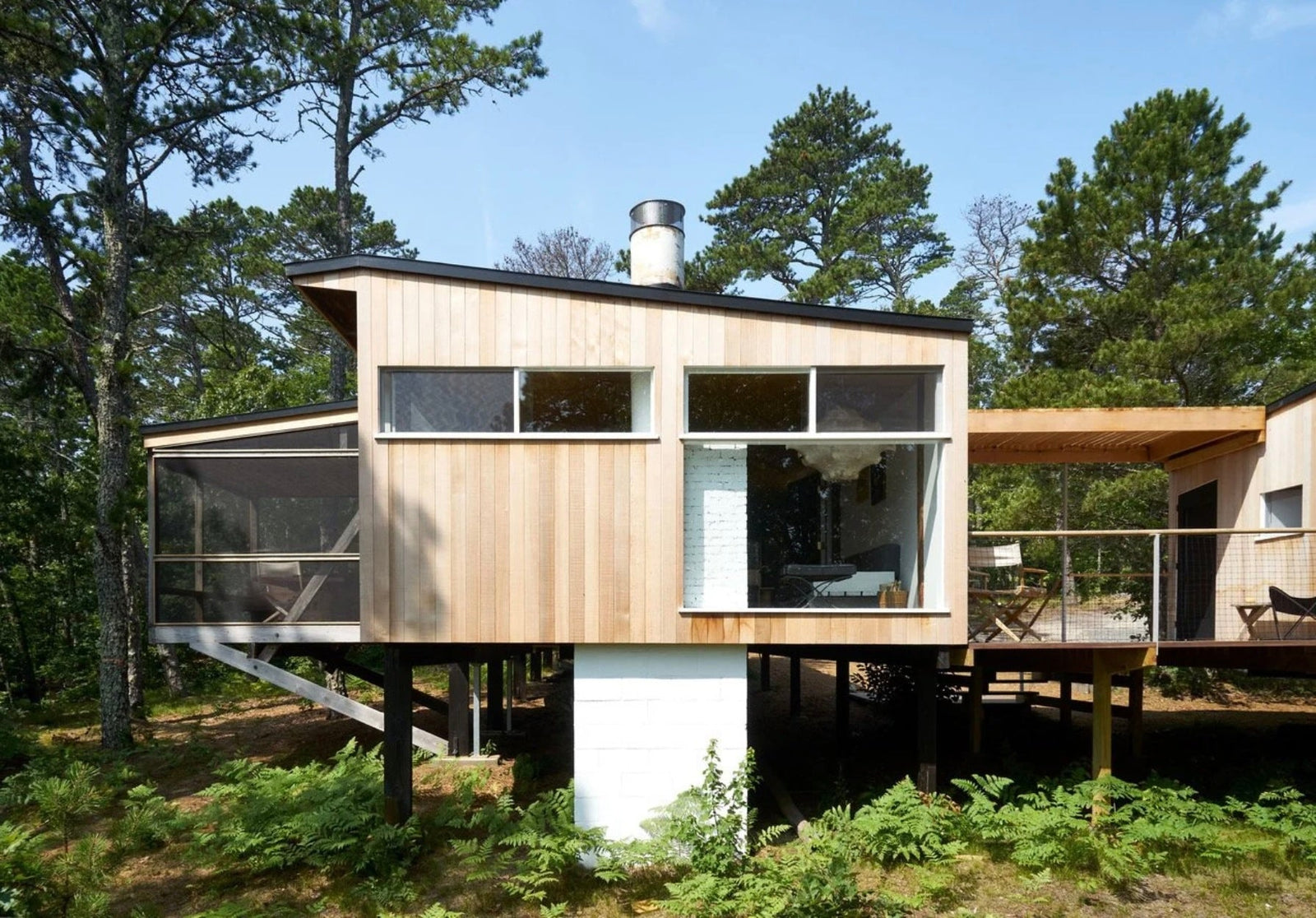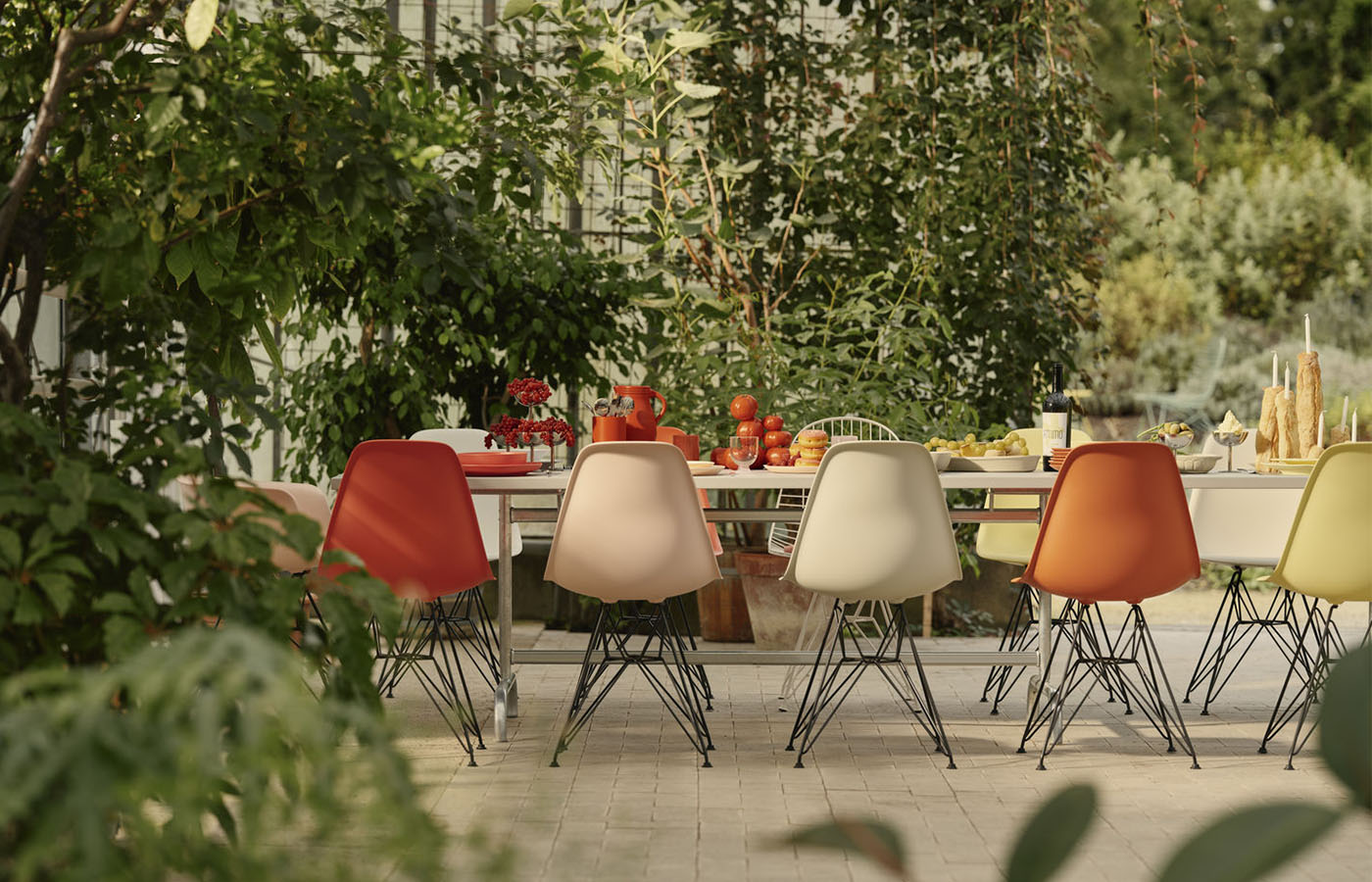Tucked into the wooded landscape of Cape Cod, Marcel Breuer’s Wellfleet cottage stands as a modest but deeply significant monument to modernist experimentation, personal expression, and architectural philosophy. Recently acquired and restored by the Cape Cod Modern House Trust, the house is being preserved not simply as a relic of Breuer’s storied career, but as a living laboratory one that reveals the mind of a designer constantly exploring the relationship between space, material, and the natural world.

A Bauhaus Vision Comes to Cape Cod
In the early 1940s, Marcel Breuer visited fellow architect Serge Chermayeff on Slough Pond in Wellfleet, Massachusetts. Captivated by the quiet remoteness of the area, Breuer soon purchased 24 acres nearby. His vision was more than personal; he intended to establish a colony of modernist summer homes for artists, architects, and intellectuals from his circle.
Inspired by the rustic vernacular of New England cabins and oyster houses, Breuer developed what would become one of his two defining residential typologies: the “Long House”. Elevated on posts and clad in simple materials, the design emphasized horizontal lines, economy, and a dialogue with the surrounding environment. In 1949, he completed his own house on a hillside overlooking three freshwater ponds a rectangular structure with a gently pitched shed roof, a screen porch cantilevered over the slope “like a camera on a tripod.”

Experimental Living: A House as Laboratory
Built on a budget of under $5,000, the original cottage was stark and pragmatic, no electricity, ribbed plywood siding, exposed framing, and a simple interior outfitted with Breuer-designed furniture. Yet the home was never static. Over the decades, Breuer used the space as a testing ground for new architectural ideas, materials, and colour theory. He painted and repainted the walls in primary hues, experimented with finishes like birch plywood and Homasote, and added elements such as a suspended slat ceiling and ebony-stained oak floors.
In 1961, Breuer expanded the house with a separate studio space for art, music, and gatherings. A further addition in 1968 created an apartment and darkroom for his son, Tamas Breuer. True to his interest in modular, readymade forms, Breuer constructed tables using stacked cinder blocks, topped with wood or stone a nod to his fascination with Brutalist materials not widely used in postwar European domestic architecture.

image from Breuer house project
Design Through Simplicity
The Wellfleet house is notable not only for its materials and form but for the lifestyle it embodies. Modest in scale, uninsulated, and remote, the home invites an intentional way of living - close to nature, devoid of distraction, and focused on essential experiences. Breuer’s minimalist furniture, much of it low to the ground and rearranged over time, reflects this ethos.
Layers of color on the walls tell a visual history of the designer’s evolving interests in perception, light, and mood. Meanwhile, the home became a quiet meeting place for some of the 20th century’s most influential figures, including Florence Knoll, Alexander Calder, Saul Steinberg, and members of the Saarinen family. It was a house of ideas informal but deeply intellectual.

Final Resting Place of a Master
Despite designing some of the most iconic buildings of the 20th century — including the Whitney Museum of American Art in New York and the UNESCO Headquarters in Paris, Breuer found deep personal meaning in his Wellfleet retreat. He chose the site as his final resting place. A granite slab by sculptor Masayuki Nagare, humorously inscribed, “Here Marcel Breuer broke his knee entirely of his own stupidity,” marks the grave of Breuer, his wife Connie, and two other family members. The stone, like the house, holds both wit and weight.

Restoration and Rediscovery
In July 2024, the Cape Cod Modern House Trust (CCMHT) acquired the Breuer house, initiating a careful restoration intended to return the property to its 1981 condition - the last year Breuer lived there. Under layers of later modifications, the Trust has uncovered original paint, early materials, and even the home’s tatami mat flooring. As founder Peter McMahon notes, “It’s a forensic study. We can see how he built the house and then continued to evolve it.”
This process is not merely about preservation. It is about revealing Breuer’s mindset and sharing his experimental approach with future generations of architects, scholars, and designers. The house, once private, will soon become a place of education and reflection continuing the conversations Breuer began about simplicity, nature, and modern life.
 image from Breuer house project
image from Breuer house project
An Enduring Legacy
Marcel Breuer’s Wellfleet house is more than a summer cottage; it is a physical manifestation of the modernist ideals he helped define. Here, detached from the monumental commissions and international acclaim, Breuer explored architecture on a human scale - direct, intimate, and rooted in place.
We are happy to announce that the Breuer House restoration was completed in July, if you'd like to read more about the restoration see the Breuer house projects website. As it enters a new phase of life under the stewardship of the Cape Cod Modern House Trust, the home stands not just as a tribute to Breuer’s genius, but as a resource for future thinkers. It reminds us that architecture is not only about building, it is about living, experimenting, and finding meaning in the everyday.







Leave a comment (all fields required)